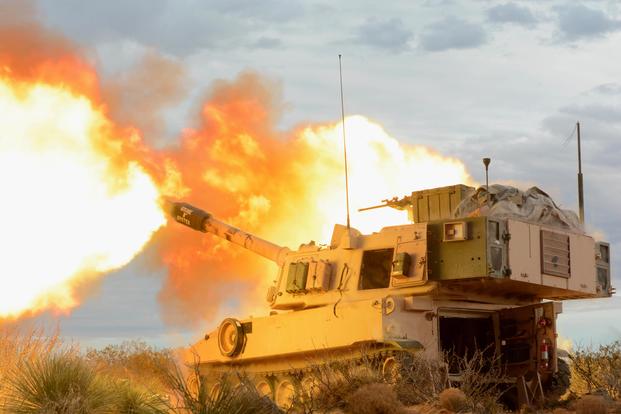Army artillery experts are inching closer to the service's short-term goal of developing a 155-millimeter cannon that will shoot out to 70 kilometers, more than doubling the range of current 155s.
Under the Extended Range Cannon Artillery program, or ERCA, M109A8 155 mm Paladin self-propelled howitzers will be fitted with much longer, 58-caliber gun tubes, redesigned chambers and breeches that will be able to withstand the gun pressures to get out to 70 kilometers, Col. John Rafferty, director of the Long Range Precision Fires Cross-Functional Team, told an audience last week at the 2018 Association of the United States Army's Annual Meeting and Exposition.
Existing 155 mm artillery rounds have a range of about 30 kilometers when fired from systems such as the M109A7, which feature a standard, 39-caliber-length gun tube.
But a longer gun tube is only one part of the extended range effort, Rafferty said.
"The thing about ERCA that makes it more complicated than others is it is as much about the ammunition as is it is about the armament," he said. "We can't take our current family of projectiles and shoot them 70 kilometers; they are not designed for it."
The Army is finalizing a new version of a rocket-assisted projectile (RAP) round that testers have shot out to 62 kilometers at Yuma Proving Ground, Arizona, said Col. Will McDonough, who runs Project Manager Combat Ammunition Systems.
The XM1113 is an upgrade to the M549A1 rocket-assisted projectile round, which was first fielded in 1989, he said.
"It's going to have 20 percent more impulse than the RAP round had," McDonough said. "So I look at that and say, 'Wow, we moved the ball 20 percent in 30 years.' Obviously not acceptable, but we ... shot it out of a 58-caliber system and shot holes in the ground at Yuma out to 62 kilometers."
The Army will add improvements to the round in the next fiscal year that should enable testers to "put holes in the ground out to 70 kilometers," he said. "One of the things our leadership has been adamant about is don't talk about range. Show range, shoot range, and then you can talk about it. But if you haven't put a hole in the ground in the desert, don't advertise that you can go do it."
The long-range precision fires effort is the Army's top modernization priority. The effort's longer-term goals include developing the Precision Strike Missile, with a range out to 499 kilometers, and the Strategic Long Range Cannon, which could have a range of up to 1,000 nautical miles.
-- Matthew Cox can be reached at matthew.cox@military.com.










